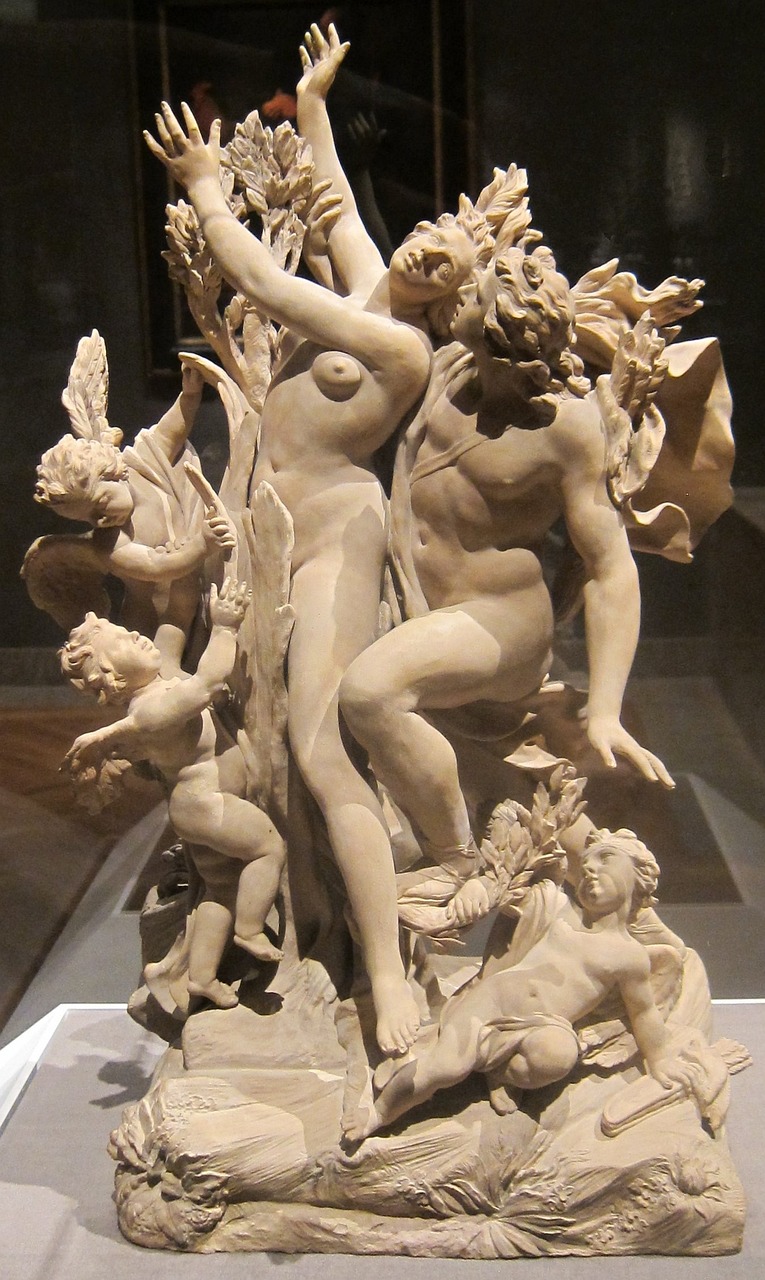Apollo Grannus: The Multifaceted Celestial Deity
Origins and Family: A Comprehensive Overview
Apollo, renowned for his many attributes, stands as a complex figure in mythology. His lineage includes his twin sister Diana, elemental in the realm of archery, sharing a cosmic connection—his divine alignment with the Sun and hers with the Moon. Born to the influential gods Jupiter and Latona, their storied birth saw Latona seek refuge on the floating island of Delos, as Juno had denied her any terrestrial haven.
The various narratives about Apollo’s romantic pursuits, notably his infamous unrequited love for the nymph Daphne, culminate in her transformation into a laurel tree, thus designating the laurel as sacred to him. His significance extends to his children in mythology; Æsculapius, the god of medicine, emerges as his son through the nymph Coronis, while Hygieia, the embodiment of health, is Æsculapius’s daughter.
Interestingly, in the Gaulish pantheon, Diana’s counterpart is represented by the goddess Ðirona, closely associated with Apollo, implying they may have shared roles within specific worship practices. In keeping with artistic traditions, the Muses—female deities of the arts—often feature alongside Apollo, enhancing his representation as a god of creativity and music.
Apollo’s Attributes: The Iconography of a God
Visual representations of Apollo often capture his androgynous elegance, marked by long hair and a consistently youthful, beardless visage. His lyre, a hallmark of his musical prowess, accompanies him in depictions alongside other symbols, like the bow, laurel, and the prophetic tripod from Delphi. Notably, animals linked to Apollo include the python, griffin, and crow, each reflecting various aspects of his divine nature.
While Gaulish depictions of Apollo stay true to their Hellenic roots, their rendering on Gaulish coinage frequently shifts into abstract representations, demonstrating local artistic interpretations.
Regional Variations of Apollo: Recognition Across Gaul
Julius Caesar and later sources suggest that the Gauls embraced Apollo in various forms, likely preserving pre-Roman designations—each linked to the domain of healing and particularly tied to hot springs, significant in Gaulish culture. Notable sites associated with Apollo include Grand, Bourbonne-les-Bains, and Bourbon-Lancy, alongside many others where he was revered under different epithets.
The multitude of names attributed to Apollo reveals his adaptations across regions. Some examples of these epithets include:
– Apollo Anextlomarus
– Apollo Borvo
– Apollo Grannus
– Apollo Maponus
– Apollo Belinos
These names generally derive from Celtic etymologies, suggesting various local interpretations of his divine attributes, especially roles linked to health and protection against ailments.
Grannus: The Healing Aspect of Apollo in Northern Gaul
Predominant in northern Burgundy, Apollo Grannus stands as a pivotal manifestation, often paired with Ðirona in worship and various inscriptions. This healing god is interwoven with the solar iconography associated with the broader classical notion of Apollo.
The interpretation of Grannus is complex; some scholars suggest a link to the Irish term for ‘sun’, while others propose connections to the word signifying ‘healing’. This dual nature encapsulates Apollo Grannus’s potent blend of sunlight and therapeutic attributes, with practices such as a ten-night festival dedicated to him evident at Limoges substantiating his significance within the local religious landscape.
Borvo and Belinos: Additional Deities in the Apollo Sphere
In the mid-Gaulish region, the worship of Borvo—symbolizing hot springs—coexists with Apollo’s reverence. Major sanctuaries stemming from Borvo’s cult highlight the importance of natural thermal waters in local healing traditions.
Belinos, primarily venerated in northern Italy, also finds limited worship in Gaul. His inscriptions echo attributes of power and brilliance, although they do not consistently link him to Apollo, unlike the associations evident in other locales.
Cultural Significance: Festivals and Connections
Cultural observances, such as the decamnoctiacis Granni, underline the extensive celebrations tied to Apollo, distinct yet connected to broader Roman festivities like the Games of Apollo. His mythological connections extend to the mythical Hyperborean land, linking Apollo not only to healing but also to idyllic domains sought after by ancient peoples.
Conclusion: Analyzing Apollo’s Diverse Role
In summary, the various aspects of Apollo in Gaul reveal a multifaceted deity whose clinical prowess and celestial connections underscore a broader cultural significance. He is revered not merely as a god of health but also as a source of artistic inspiration and a symbol of beauty and truth. Apollo embodies a celestial spirit that intricately weaves through the healing practices and vibrant cultural practices of ancient Gaul.



